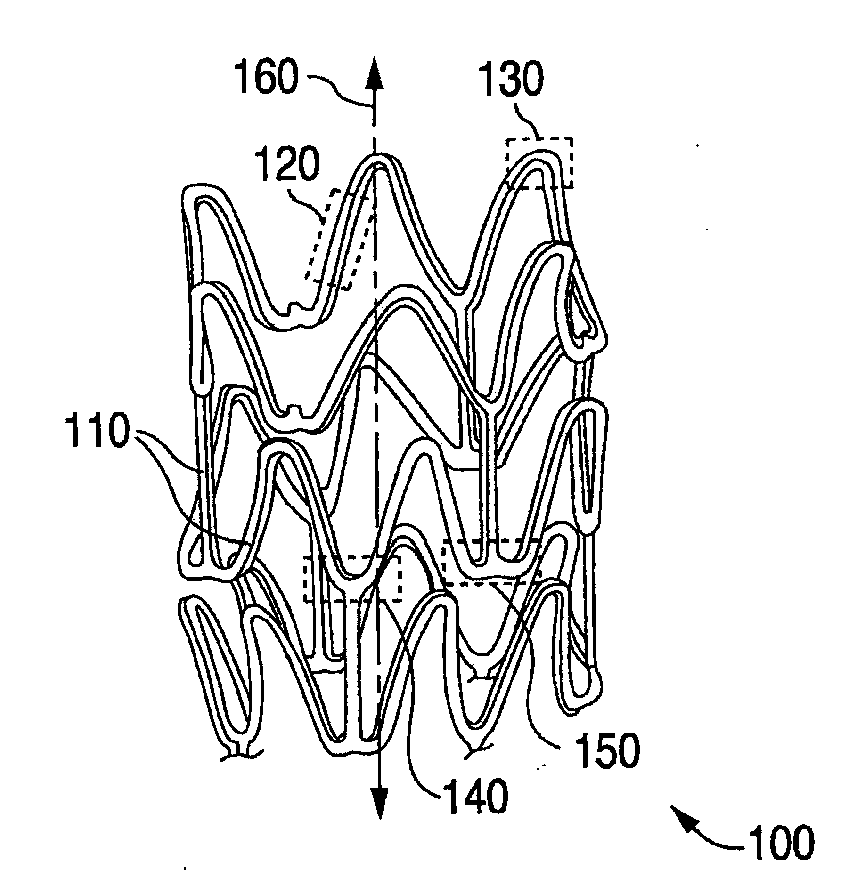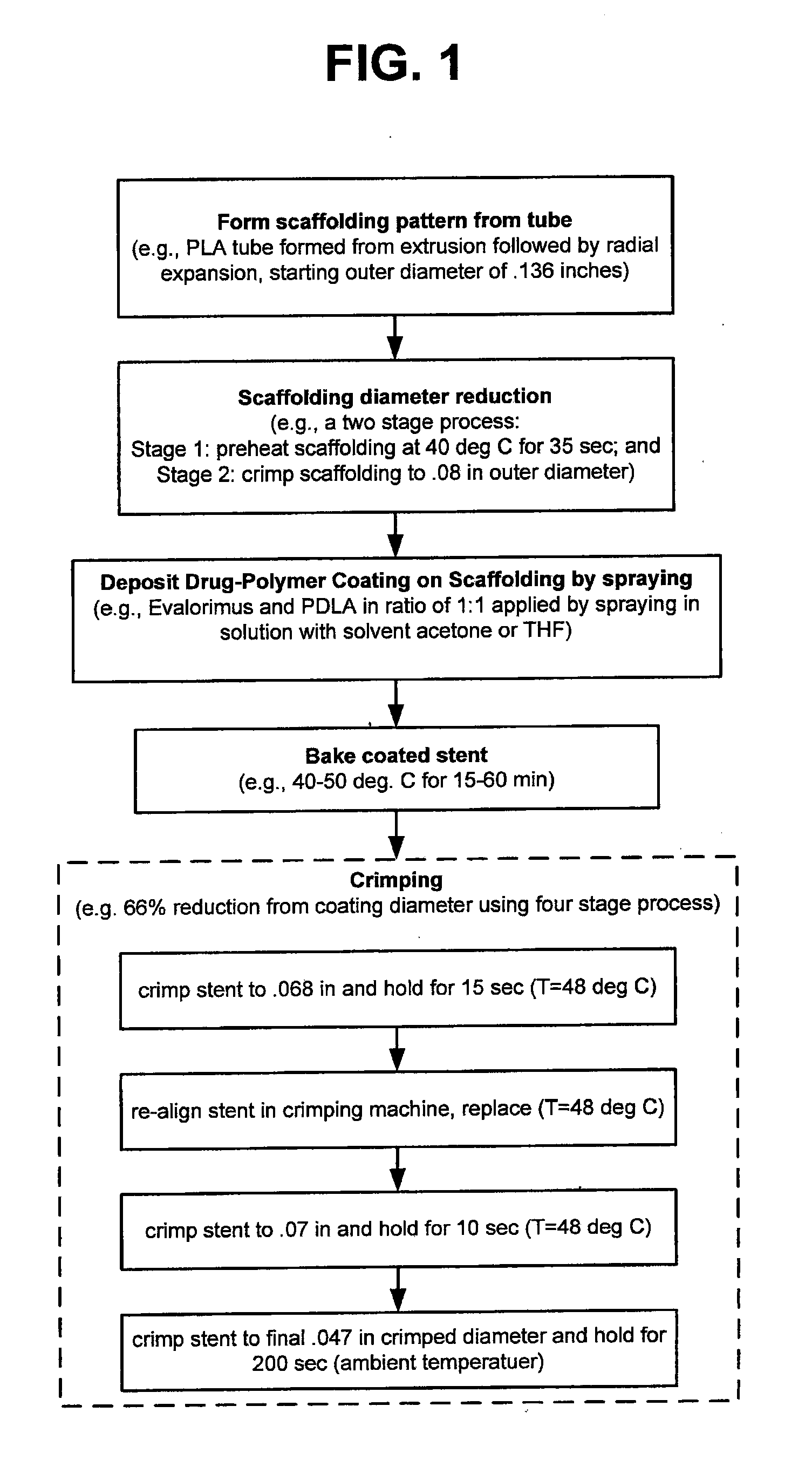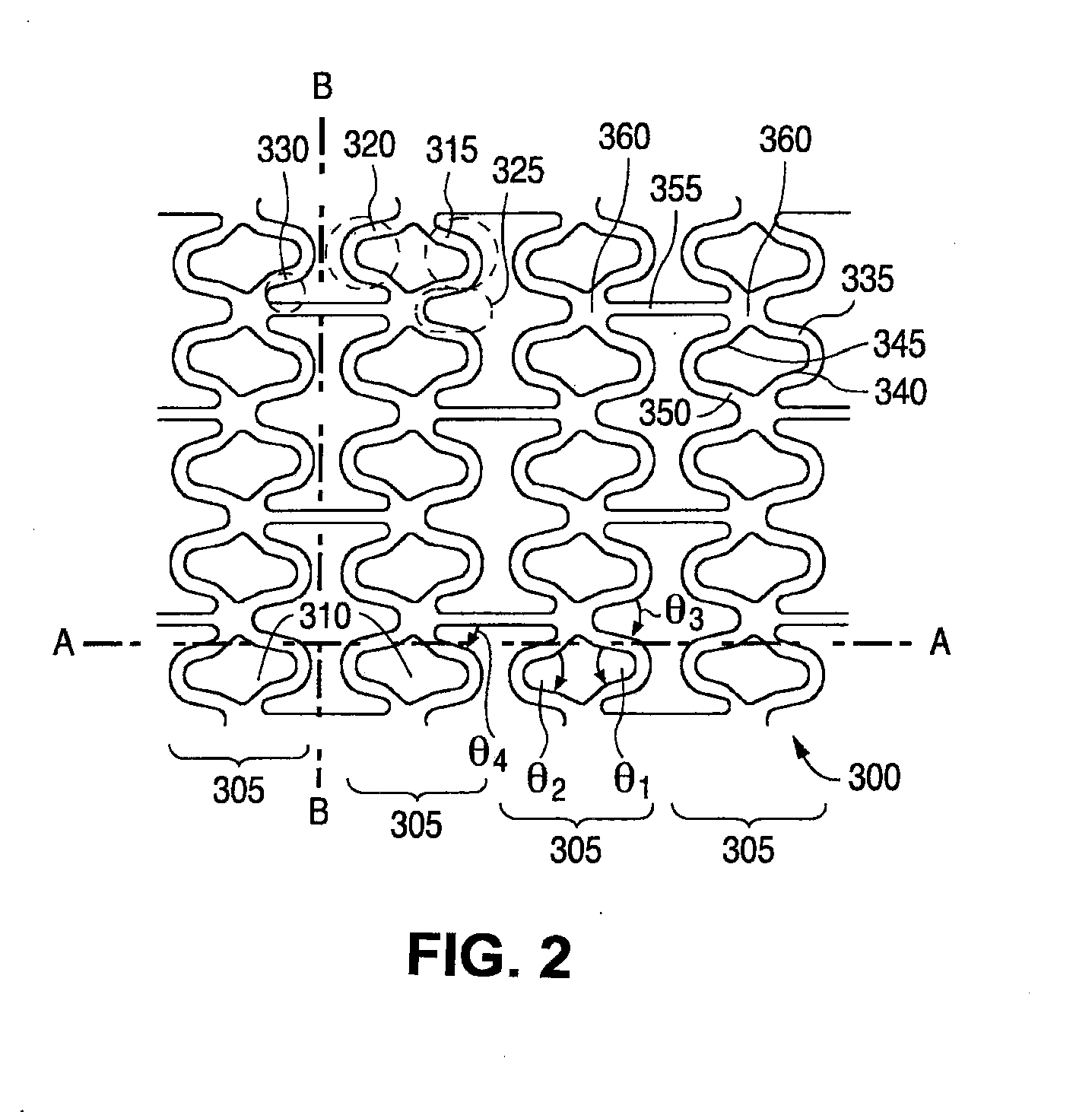Methods To Increase Fracture Resistance Of A Drug-Eluting Medical Device
a drug-eluting, medical device technology, applied in the field of drugeluting medical devices, can solve the problems of inability to reduce down, many factors that cannot be fully understood, and many of these factors are not fully appreciated, and achieve the effects of improving the fracture resistance of the drug-eluting polymer stent, reducing stress/strain, and increasing the fracture resistance of the coating and scaffolding
- Summary
- Abstract
- Description
- Claims
- Application Information
AI Technical Summary
Benefits of technology
Problems solved by technology
Method used
Image
Examples
Embodiment Construction
[0022]According to a preferred embodiment the polymer poly(D, L-lactic acid) (hereinafter “PDLA”) carries the drug in the coating. PDLA is an amorphous polymer, i.e., lacking any defined crystalline pattern. As such, PDLA tends to provide more favorable fracture resistance properties over a polymer that has a semi crystalline, or crystalline structure. The polymer for the scaffolding may be PLLA or Poly(lactide-co-glycolide) (PLGA). Any composition between 0 and 100% of lactide, in particular, a range of 80 / 20 to 90 / 10 of lactide / glycolide on a molar basis, or a range of 93 / 7 to 97 / 3 of lactide / glycolide on a molar basis may be used for a PLGA scaffolding polymer.
[0023]The fracture elongation of PDLA has been measured to be about 5%. “Fracture elongation” is meant to mean the percentage elongation of the material before the onset of significant cracking / peeling. This quantity may be measured by a tensile test known as the dumb bell test, as is known in the art. Unfortunately, there ...
PUM
| Property | Measurement | Unit |
|---|---|---|
| angle | aaaaa | aaaaa |
| temperature | aaaaa | aaaaa |
| thickness | aaaaa | aaaaa |
Abstract
Description
Claims
Application Information
 Login to View More
Login to View More - R&D
- Intellectual Property
- Life Sciences
- Materials
- Tech Scout
- Unparalleled Data Quality
- Higher Quality Content
- 60% Fewer Hallucinations
Browse by: Latest US Patents, China's latest patents, Technical Efficacy Thesaurus, Application Domain, Technology Topic, Popular Technical Reports.
© 2025 PatSnap. All rights reserved.Legal|Privacy policy|Modern Slavery Act Transparency Statement|Sitemap|About US| Contact US: help@patsnap.com



